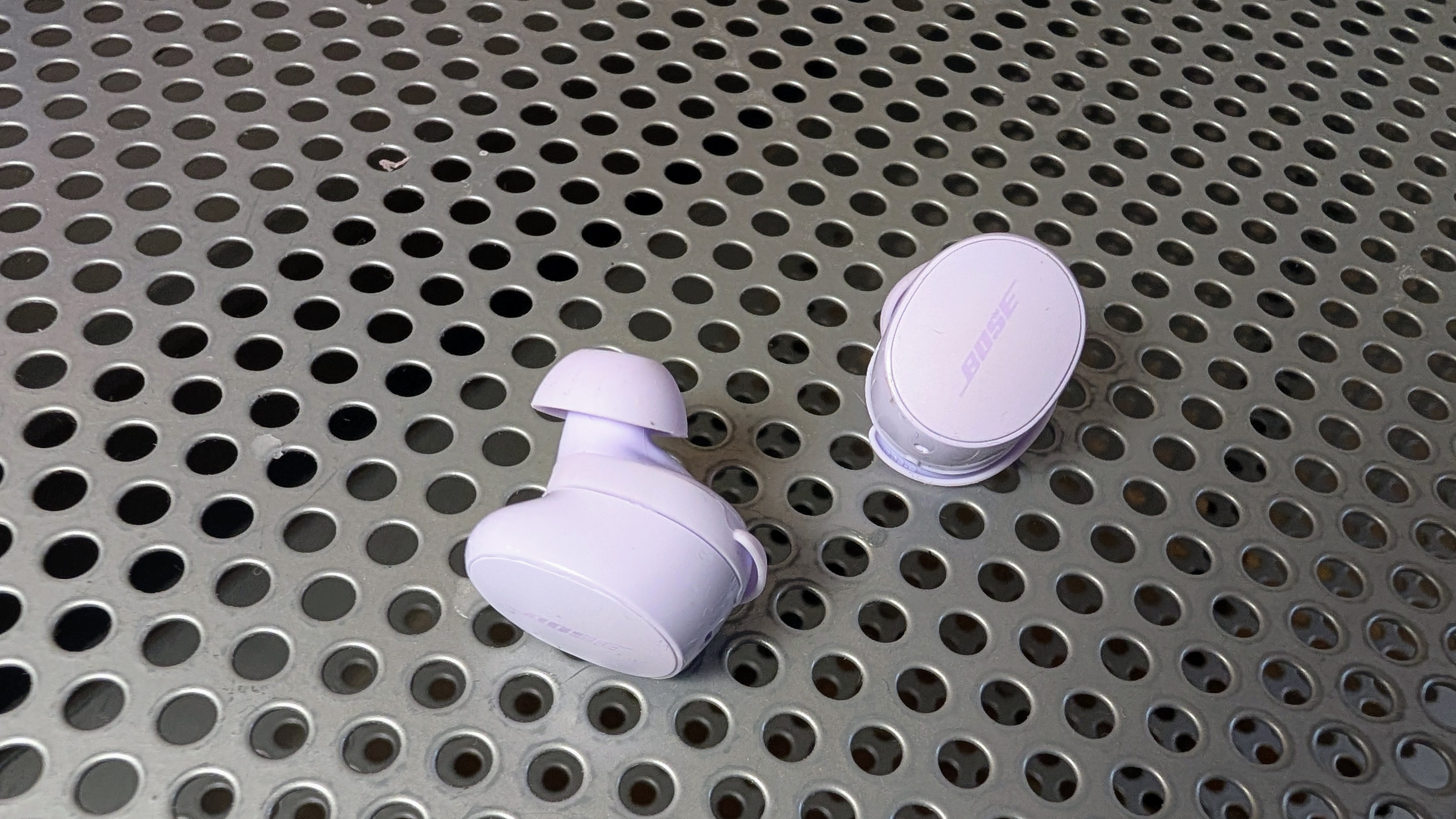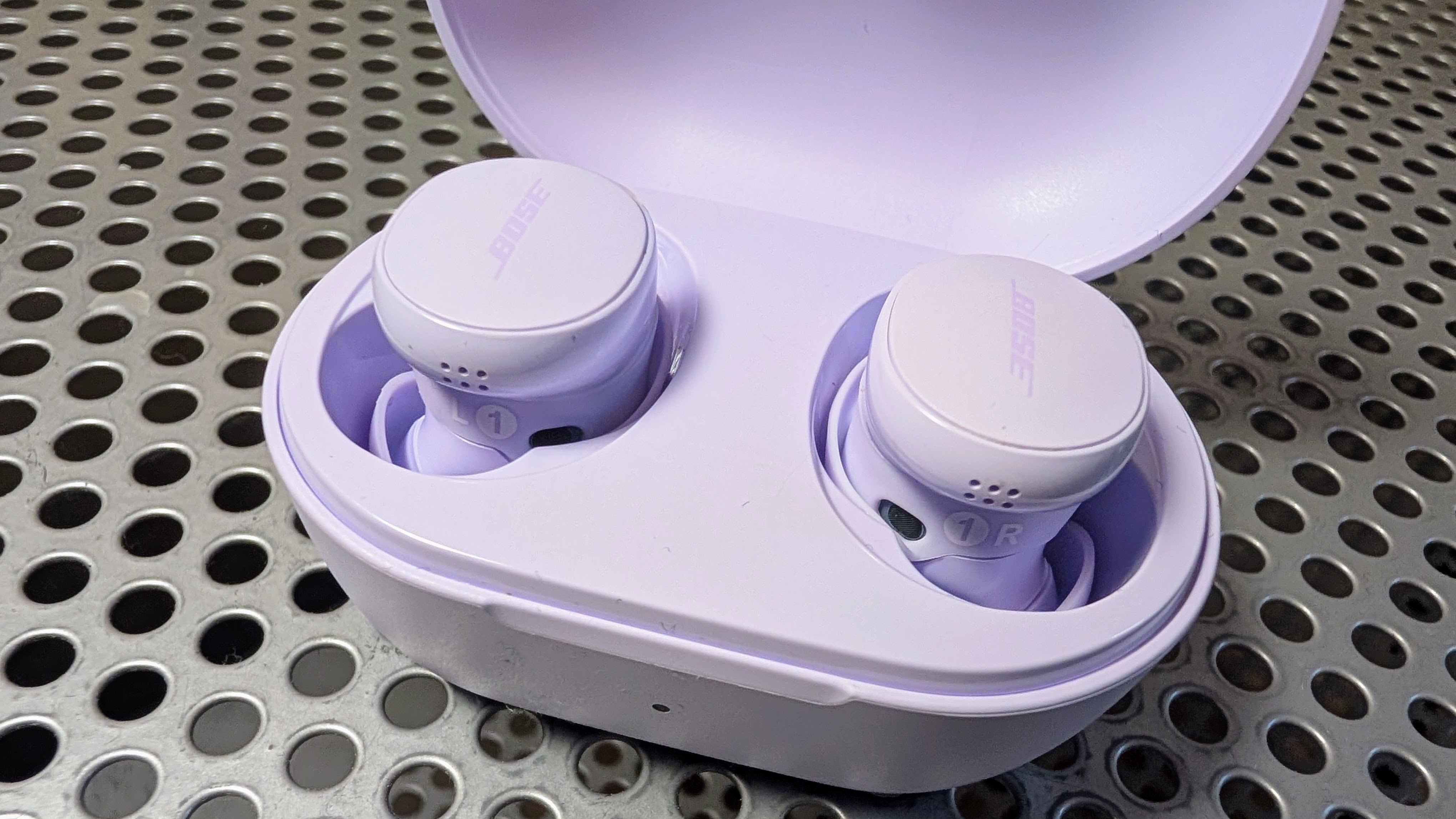
Launched towards the end of 2024, the Bose QuietComfort Earbuds offer a slightly more affordable option than the Bose QuietComfort Ultra Earbuds – which are still some of the best noise-cancelling (ANC) headphones I’ve ever tried.
Because of that, I had high hopes for the 'QCE', as some people shorten the name to. If you want to know how they compare, then you're in the right place – as I’ve been using them over the last couple of months, everywhere from the London Underground to the gym. And to cut a long story short – there’s a lot to like!
Before I dive in, it’s worth pointing out that if you are getting a bit of déjà vu with these earbuds, there’s good reason: Bose discontinued the QuietComfort Earbuds II and started fresh, naming its 2024 model the QuietComfort Earbuds – as if they were the first. They might not be the first, but they certainly are among the best.
Bose QuietComfort Earbuds: price & availability
Launched in September 2024, the Bose QuietComfort Earbuds initially cost £179 in the UK, $179 in the US, and AU$289 in Australia – but there have already been discounts significantly dropping the price. Check out the widget embedded above to see the current lowest price.
Bose QuietComfort Earbuds review: what’s new?
Compared to the Ultra, the regular QC Earbuds opt for a rounded design rather than a stem – and have a slightly chunkier case. However, you’ll still get the super secure stability bands around the outside and soft ear tips.
They have slightly better battery life, with 8.5 hours per charge and a total of 31.5 hours of listening time with the case. The Ultra can provide 6 hours of music per charge and 24 hours with the case, so the 'lesser' product is better in this regard.
Currently, the QuietComfort Earbuds 2024 don’t have spatial audio, and the ANC is less advanced than on the Ultra. But you will get a new selfie trigger in the touch controls – so you win some, you lose some.
Bose QuietComfort Earbuds review: design & features

The Bose QuietComfort Earbuds are rounded, don’t have a stem, and sit discreetly in your ear. They are available in black, white, or lilac (as per my review sample) and come housed in a matching charging case that opens like a jewellery box.
Made largely from plastic, the QuietComfort Earbuds feel sturdy, and they are IPX4 rated – so I wasn’t worried about listening to music on a wet afternoon or getting sweaty during a workout.
At 8.49g each, the earbuds are relatively big – but they felt nicely weighed down in my ear. They come with three sizes of silicone ear tips and stability bands to keep them in place. When I went for a run they felt secure and I wasn’t at all worried about one falling out.
The charging case is quite large in comparison to other true wireless earbuds, so it certainly didn’t easily slip into my jeans pocket. The lid also feels a little flimsy, something I noticed on the pricier Ultra Earbuds as well. But having said that, I’ve been using the Ultra model for a long time and the case remains in tact.
Bluetooth 5.3 delivers a solid, stable connection between the earbuds and your phone. The best part? These have multipoint connectivity so you can be hooked up to multiple devices at once – and easily switch between them. I would regularly be connected to my smartphone and my laptop at the same time, for example.
Touch controls on the outside of each earbud allow you to control the music without needing to unlock your phone too. One tap pauses or plays, two taps skips forward to the next track, three taps starts the song again, and a long press cycles through the ANC modes.
There’s also a nifty little feature unique to this 2024 model of the QuietComfort Earbyds, allowing you to take photos on your phone camera by tapping the touch controls. That means you can set up a group shot and get into place without setting a timer. It’s quite random but actually came in handy a few times.
Not keen on touch controls? No problem! You can use voice commands to change the music too. Just say “hey headphones, pause the music” or “hey headphones, turn the volume up” and these Bose 'buds will listen.
Interestingly, these earphones have their very own smartphone app – they don’t join up to the usual Bose one. The Bose QCE app is available for both Android and iOS and gives you all sorts of extra controls like the ability to change the touch gestures, adding features like fast mute, access to your voice assistant and remote selfies.
Bose QuietComfort Earbuds review: sound & performance

Sound quality is a huge draw to all Bose audio equipment, and these QuietComfort Earbuds certainly deliver in that sense. To sum up the audio in three words: it’s rich, balanced and detailed.
During testing, I listened to a range of different tracks and genres. Vocal-heavy songs like Listen by Beyoncé showcase how well-balanced these are, allowing for crystal clear distinction between every element of the song, be that the soft piano, dramatic drums or the increasing intensity of her voice.
On the flip side, more upbeat songs like SOS by Little Simz are delivered with an enthusiastic bass performance, without ignoring the more subtle instruments and distant vocals littered throughout the track.
Bose holds the crown as delivering some of the best ANC in the world in its Ultra Earbuds, so I was expecting to get the same from these 'buds. Truth be told, that’s not the case – but then that's why they're positioned at a lower price. It is noticeably less effective, but it’s still miles better than most competitors at this price point – so it's all about context.
With the earbuds in my ears, when music was playing I could barely hear anything happening around me. Even the extra loud parts of the London Underground were significantly dulled behind the music. In a loud cafe, I wasn’t distracted by conversations nearby, and while I was working I could barely hear my keyboard taps.
Unlike the Ultra, the more entry-level Earbuds don’t currently have immersive spatial audio, but Bose has promised this will arrive with a software update further down the line. So that's a future upgrade bonus.
If you’d like to customise the sound, the app has a selection of adjustable EQ settings. You can choose from several presets, such as Flat, Bass Boost and Treble Reducer, or tweak the audio manually across five bands to create a new, custom sound setting.
Bose QuietComfort Earbuds review: verdict

The Bose QuietComfort Earbuds have impressive sound and effective ANC. They are well worth considering, especially if the Bose QuietComfort Ultra Earbuds are out of your price range – because despite the entry-level positioning of Bose's lower-spec earbuds, the performance is mind-blowing.
Audio is simply excellent no matter what you listen to, particularly when you make use of the preset sound modes in the app. I was also pleased with the performance of the ANC – even if it’s not quite on the same level as the Ultra – while plenty of handy extra features like multipoint connectivity and long battery life make these great in-ears at a great price.
Also consider
Apple users should consider the AirPods Pro 2 – they are direct competitors to the Bose, with a similar feature set and asking price. They have excellent ANC, impressive sound quality, a comfortable fit, and are ideal for fitting into Apple's ecosystem.
Another similarly priced pair of earbuds to consider (when they are on offer), is the Sony WF-1000XM4. Like the Bose, the Sony deliver a rounded design rather than a stem. They have solid ANC, people-pleasing sound, and handy features like Speak to Chat and Voice Control.







